Laundry appliances might not get the reputation they deserve. Sure, doing laundry might not be everyone’s favorite thing to do, but really, is there anything more satisfying than pulling your favorite, freshly washed article of clothing from the dryer?
On the other hand, doing laundry in a faulty (or outdated) washer or dryer is hardly the same experience. Between long wash and dry times and clothes that constantly come out ruined, doing laundry in an ineffective washing and drying machine is hardly a dreamy process.
Still, for many shoppers, the only thing worse than putting another load to wash is going through the process of buying a new washer or dryer — and we get it! What was once a humble market has now become a buzzing industry full of fancy jargon and all the bells and whistles that weren’t around even 20 years ago. What was once a matter of replacement suddenly becomes a serious decision.
But laundry day doesn’t have to be complicated. In fact, with our laundry appliance guide, you can quickly sort through the dos and don’ts when it comes to shopping for a new washer or dryer.
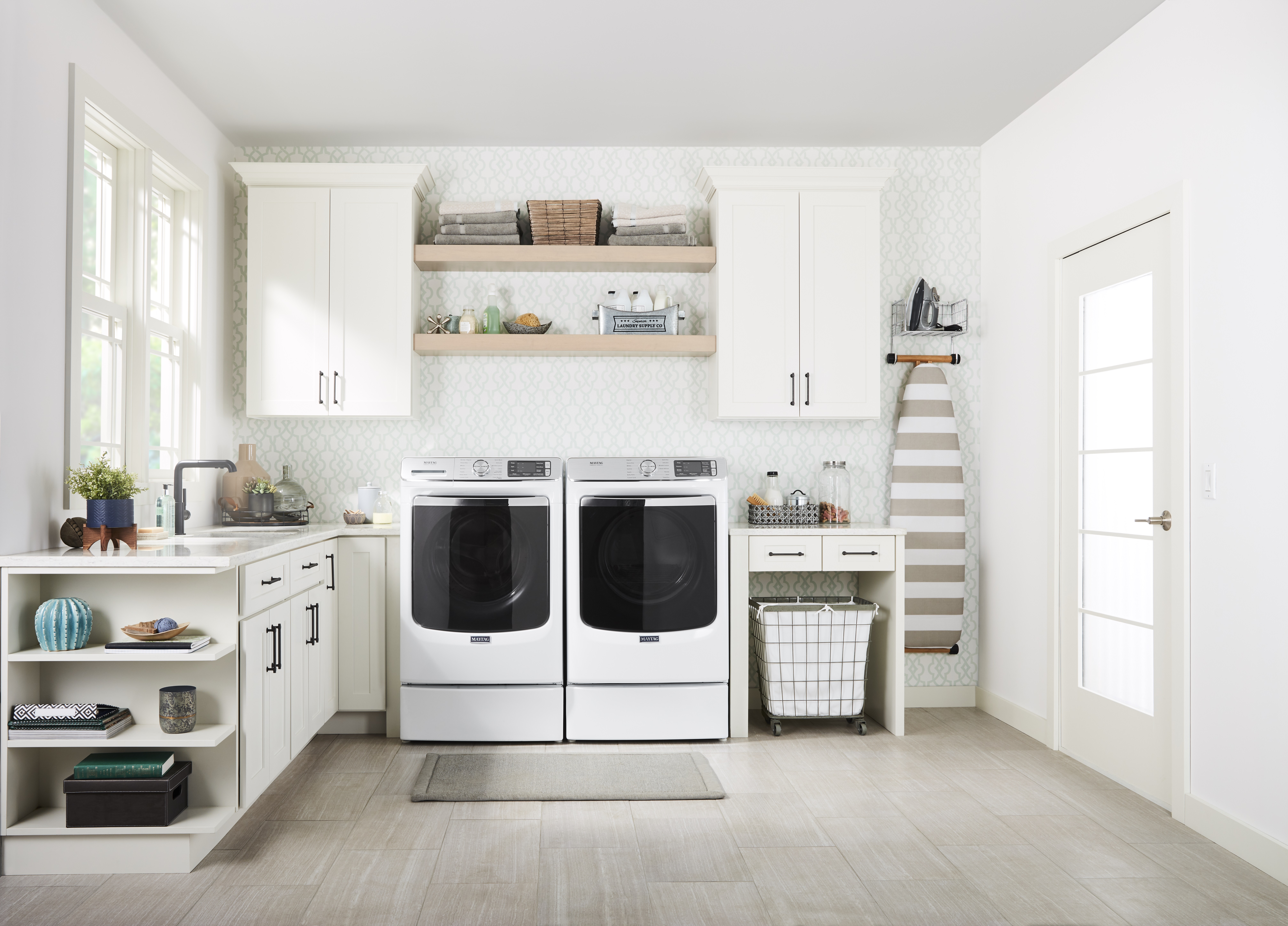
How to Prepare for a New Washer & Dryer
When it comes to washers and dryers, capacity directly equates to how big each unit will be. While the standard width for both washers and dryers is around 27 inches, depth can vary depending on how many cubic feet each appliance comes with. For reference, that can be anywhere between 34 to 42 inches for a standard washer or dryer.
That’s why it’s important that you fit your home for a new washer or dryer before you shop.
To make this process easier, check out our visual step-by-step guide on how to measure your home to fit a new washer or dryer.
To recap:
- Measure height, width, and depth of the area where the new washer/dryer will go; we recommend taking three measurements for accurate results.
- When shopping for a top-loading washer, make sure to account for overhead cabinetry.
- When shopping for a front-loading washer or dryer, ensure there is enough clearance between the washer/dryer door and any obstructions.
- Verify the floor is level with no more than an a one-inch incline.
Also remember:
- Washers need at least six inches of minimum clearance for hoses and hookups in the back.
- Dryers need at least four inches of anterior clearance for the vent.
- Washers and dryers need at least one inch for ventilation around all the sides.
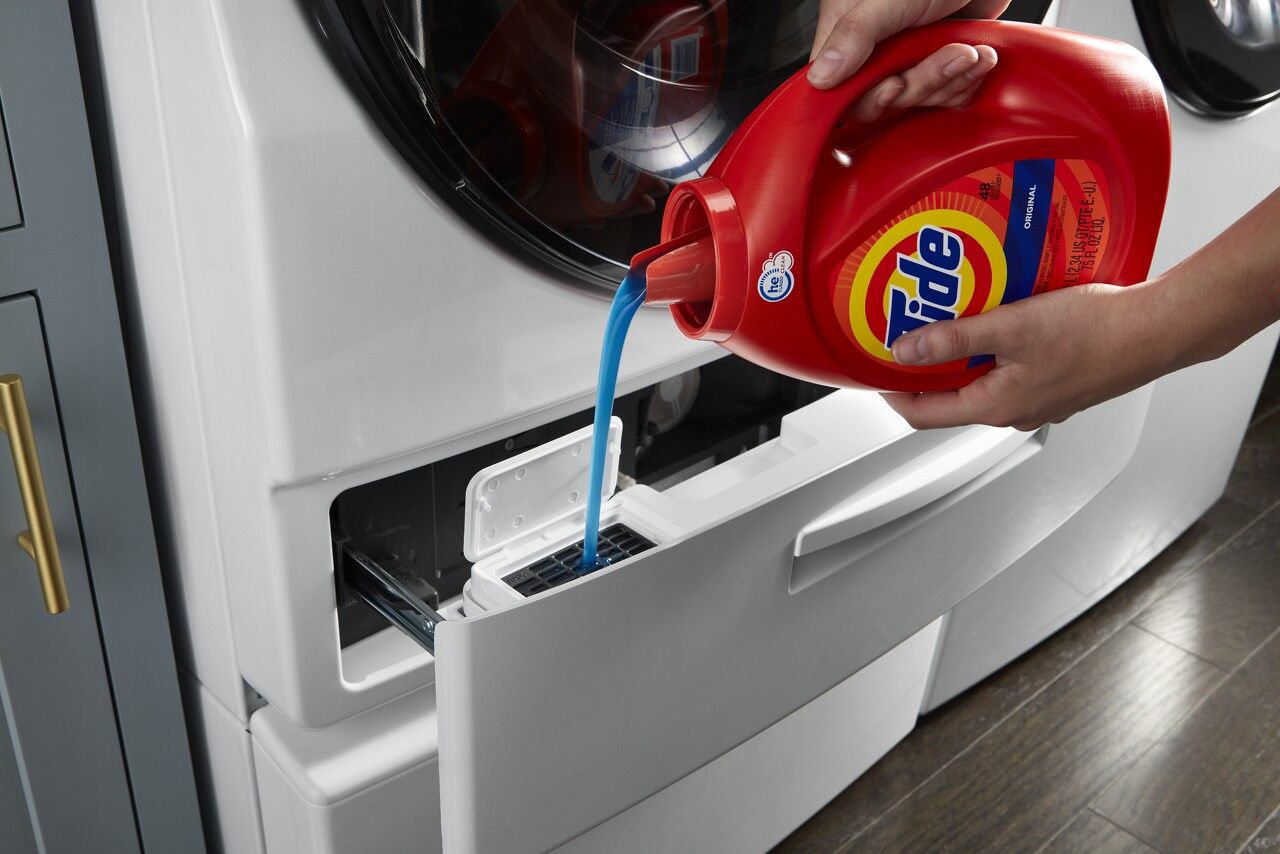
What to Look for in a Washer
While a washer’s job is essentially to clean clothes, how it does that will play a major role in whether the unit you purchase is a keeper or a regret. Start by asking yourself how much laundry you expect to do.
Do you live alone, with a partner, or are you a member of a full house? Does your occupation require regular washing? Has there been a lifestyle change, such as a new member of the family?
Simple questions such as these are helpful ways to help you decide whether you need:
- A compact washer with around 1.5 cubic-foot capacity (10 to 12 pounds of laundry).
- A regular washer between 3 and 4 cubic-foot capacity (12 to 16 pounds of laundry).
- A large washer between 4.1 and 4.5 cubic-foot capacity (up to 20 pounds of laundry).
- A mega-capacity washer with over 5 cubic feet (20 to 25 pounds of laundry).
Washer Doors
Traditionally, washing machines were designed as top-loaders, meaning instead of a door that opens out, they had a lid that opens up. Keep in mind, the average height of a washer lid is 20 inches, so in tight spots with built-in overhead cabinetry, the lid may be difficult to use. And while some manufacturers like LG, Samsung, and GE carry washers with glass lids that make monitoring cycles easy, a top-load washer lid will always make it harder to access the control panel when open.
The good news is that manufacturers have since improved on the lid design, developing new features such as a soft-close function that prevents the lid from slamming down, and hold-in-place positioning that lets users load clothes even when the lid can’t open all the way.
That being said, users don’t have to worry about overhead clearance with front-load washers and since the drum sits at shoulder level, reaching into the tub is easier, especially for users who aren’t necessarily tall. For even more flexibility, make sure to keep an eye out for front-load washers with reversible doors that allow users to switch the door swing clearance.
Washer Styles
Of course, there are more significant differences between these types of washers beyond just doors. The main difference between top-loading washers and front-loading washers is that top-loading washers use a vertical agitator, whereas front-loading washers rely on gravity and friction from a rotating drum to clean clothes.
Top-load Washers

Agitators may be the oldest method of washing clothes, but they’ve stuck around because they deliver an exceptional clean and are typically faster than their front-loading counterparts. That’s thanks to more friction, which rubs clothes together, effectively releasing stains and messes.
However, that very same action can be harsh on fabrics, and does not provide the gentle wash action that an impeller washer or front-load washer will.
Still, impeller washers — which use a low-profile agitator (also called a cone) to gently swirl clothes around in a wash — clean even better than top-load washers with agitators. And on top of delivering a gentler wash, impellers also eliminate the need for a central agitator, meaning they can fit larger loads than a traditional top-loading washer.
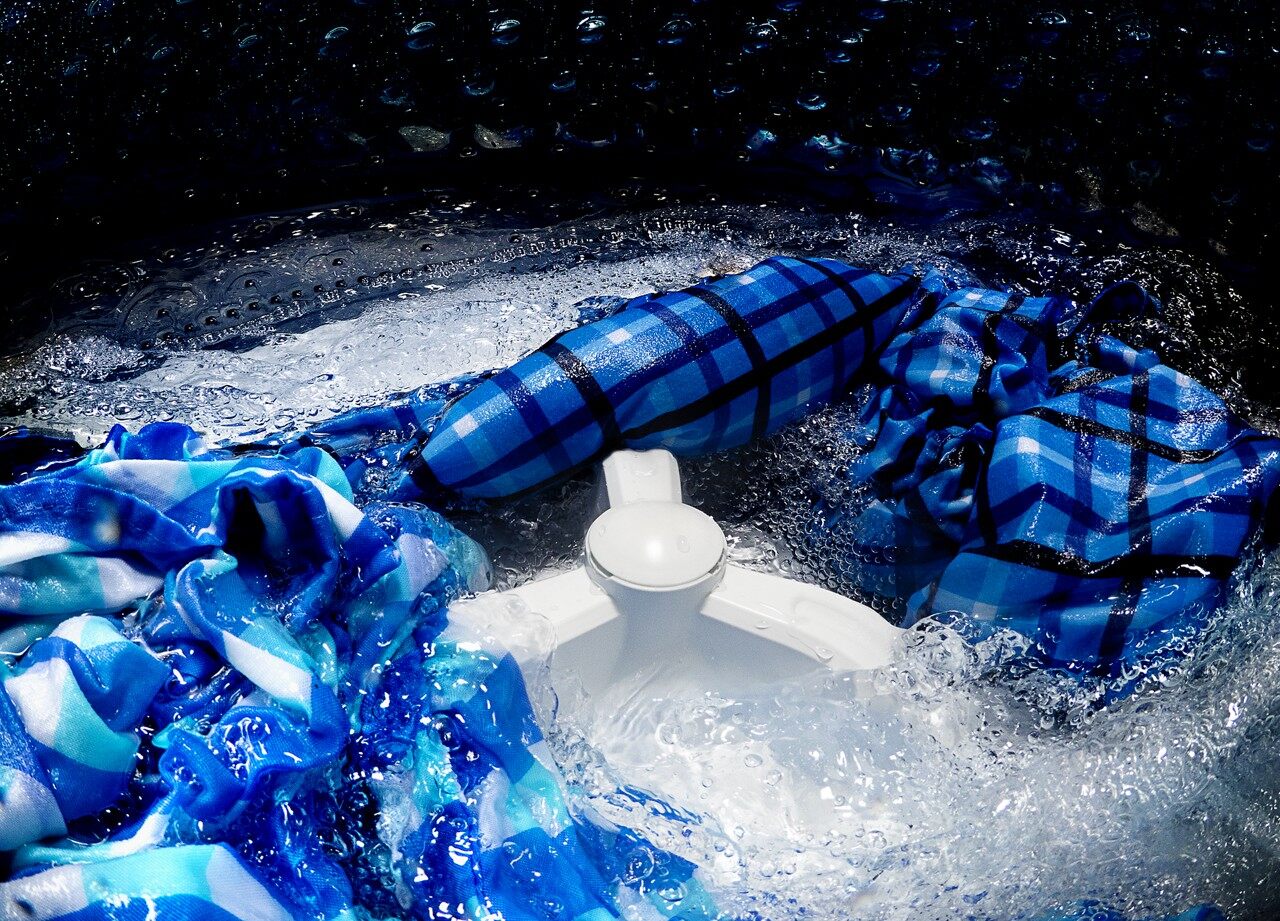
Additionally, top-loading washing machines are:
- Easier on the back.
- Users can add items later in the wash, unlike front-load washers.
Front-load Washers
As mentioned, front-load washers do not use an agitator, and instead tumble clothes around in shallow puddle of wash water. This is important because:
- Clothes are subject to less wear.
- Uses less water and is more energy-efficient.
However, front-loaders come with their own set of drawbacks. For once, once a cycle has begun, clothes cannot be added afterward. Secondly, users often remark on how front-loading washing machines accumulate mold, mildew, and odors due the front door gasket’s constant contact with water. Since the first generation of front-loaders, major developments have solved this dilemma, such as the special antimicrobial technology infused right into the gasket and dispenser.
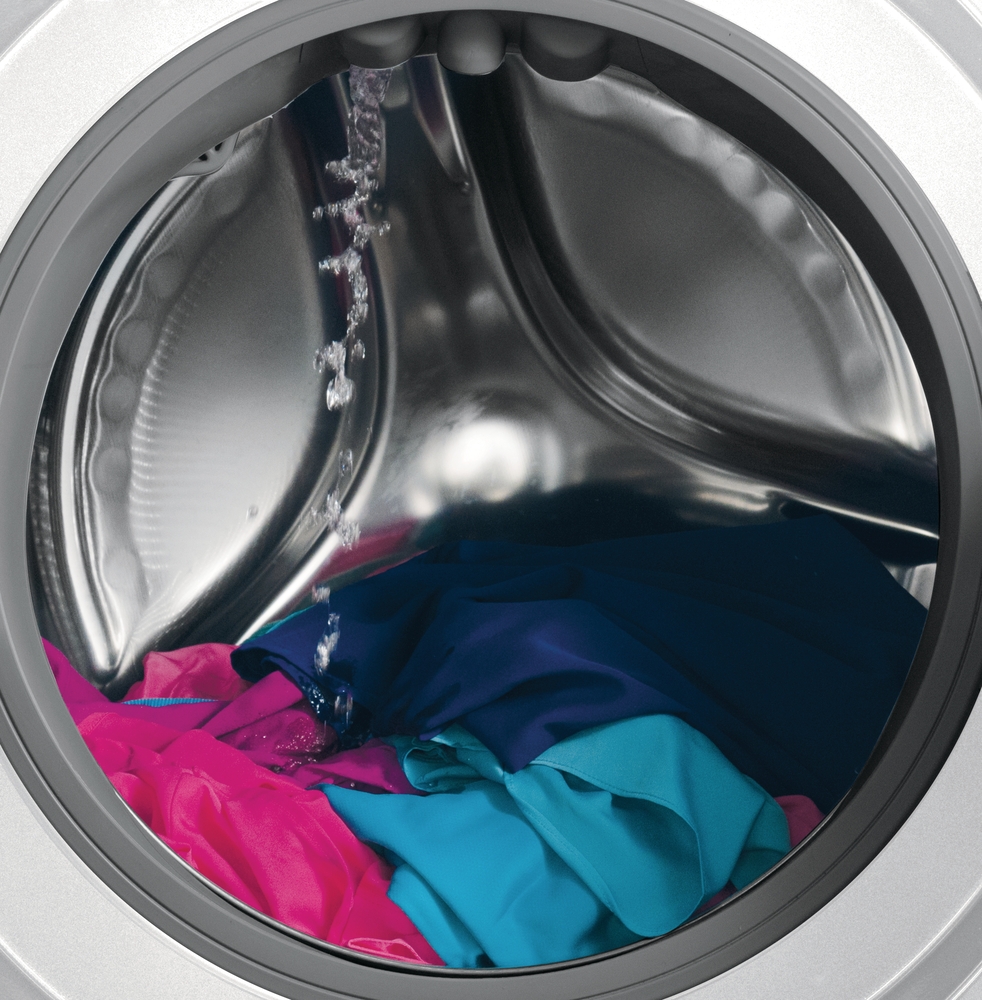
Washer Features
Whether the washer you intend to buy is a basic model or high-end laundry appliance, it should come with the regular wash cycles in order to simply and effectively clean. Depending on the model and brand, that includes a Regular cycle, Heavy cycle, Permanent Press cycle, plus a few speed wash cycles.
For even more wash performance, these features are great to have on a washer:
- Steam feature that can be used before, during, or after a wash for to boost wash effectiveness.
- Automatic temperature control uses an internal thermostat to adjust the water temperatures.
- A built-in automatic detergent dispenser pours the precise amount of detergent and keeps your laundry space free from bulky bottles.
- WiFi connectivity sends automatic alerts and notifications to a smart device.
- Self-cleaning cycle gives the inside of a washer a through scrub for optimal hygiene.
- Sanitization cycle keeps your clothes and garments up to 99.9% bacteria-free and can also help reduce allergens.
What to Look for in a Dryer
Ultimately, when it comes to shopping for a dryer, the biggest factor will be capacity. Generally, a dryer should be roughly twice the capacity of a washer in order to quickly dry loads. Once a suitable capacity for your home and lifestyle has been established, consider the following points.
Dryer Doors
It’s normal to think since dryer doors are always front-loading, that it doesn’t matter as much as it does for washers. But dryers come with either a drop-down door or swing dryer door, which might seem insignificant at first, but each provides unique aspects.
For one, drop-down dryer doors help keep clothes from falling on the floor, and can even help to sustain an empty bask while folded clothes get placed in. However, because drop-down doors open toward you, they make accessing the dryer drum a little more difficult (but not impossible).
Swing dryer doors, on the other hand, open out and away, meaning users can easily access the dryer drum and clothes. As suggested above, reversible doors give users even more flexibility when it comes to installation.
- Trending: Additionally, some dryers, like this LG 7.3 Cu. Ft. White Front Load Electric Dryer (DLE7300WE) come with a dryer door that can be used as drop-down or as a swing door, providing the ultimate practicality and accommodation.
Gas vs. Electric
Unlike washers, which are all electric, dryers are available in electric- and gas-fuel options. Ultimately, your home’s connections will determine whether you can purchase a gas or electric dryer.
Gas Dryers
On top of being generally cheaper to operate than electric dryers, gas dryers also generate hotter air than their counterparts. For many shoppers, this is an incentive, since hotter air means less time drying, and less time drying means reduced wear on clothes. Additionally, since gas dryers rely on natural fuel rather than electricity, they only require a 110-volt outlet to operate.
However, gas dryers require more consideration than electric dryers. For one, they tend to cost more up front, though, cost of operation over its lifetime usually makes up for the difference. Secondly, if not installed correctly, gas dryers can expose your home to dangerous gas leaks. Unlike an electric dryer that can be simply plugged in, professional installation is highly recommended when connecting a gas dryer.
Electric Dryers
On top of being safer than gas dryers, electric dryers only require the correct outlet to operate. This will depend on the age of your home: Homes built after 2000 use a 4-prong outlet, and those before then used a 3-prong outlet. Luckily, an experienced electrician or appliance expert should be able to change the existing cord for one that’s compatible with your home.
On the other hand, because electric-fuel dryers don’t require a gas line, installation is more flexible.
Dryer Features
Regardless of brand or when a model was released, a dryer will typically always come with the standard drying cycles, including permanent press, air dry (tumble), timed dry, and temperature controls. For even better performance, don’t forget to check out these features:
- WiFi connectivity lets you remotely monitor cycles from a smart device.
- Moisture sensors automatically detect when clothes are dry and stop the cycle, saving time and energy.
- Extended tumble finishes drying by tumbling clothes in a low-temp setting, reducing wrinkles.
- Steam dry quickly revives wrinkled or musty garments back to wearable conditions; also see drying cabinets.
- Noise-balancing tub technology keeps dryer operation quiet, while the reduced movement prevents wear on the machine.
- Sanitization cycle, which can eliminate up to 99.9% of bacteria, plus allergens.
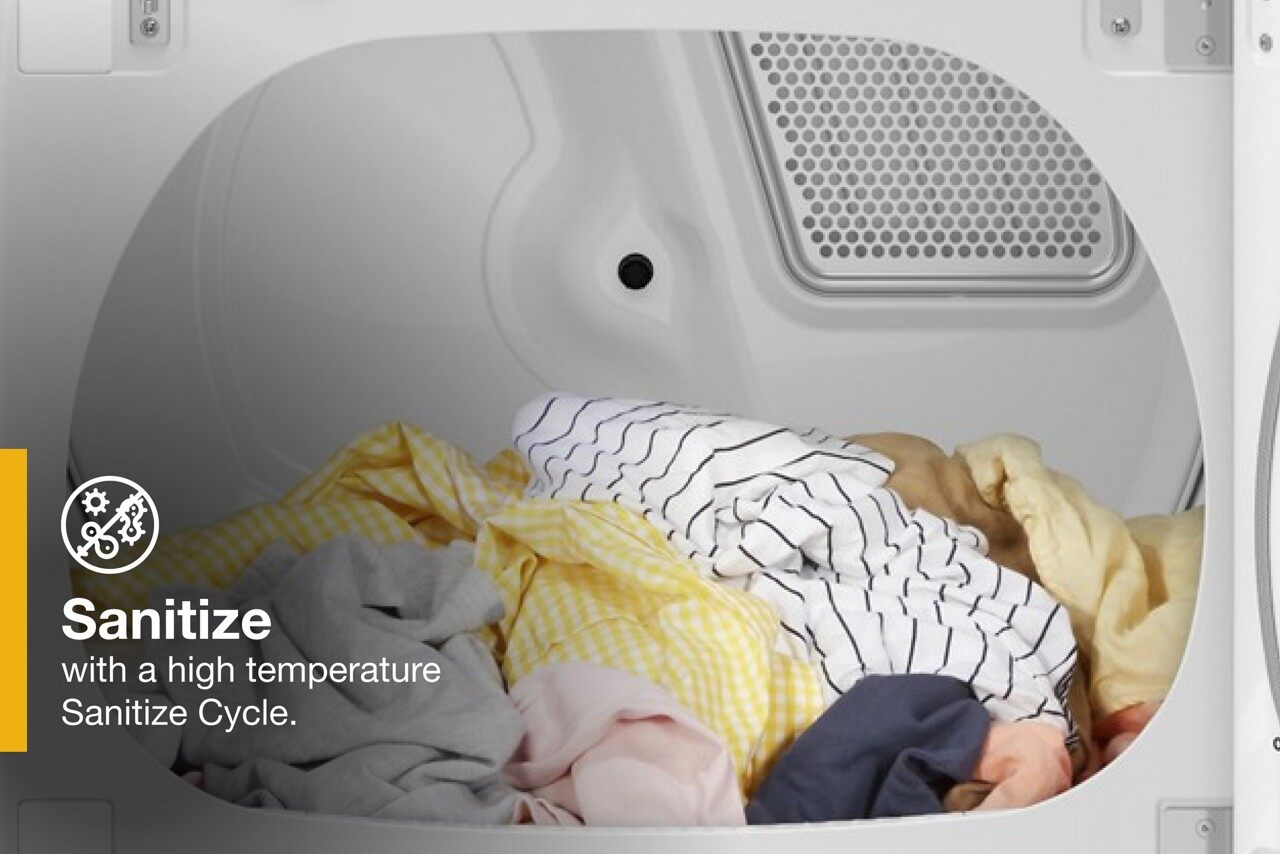
Understanding Venting
Typically, a dryer vent should be no longer than 35 feet (for special installation through the ceiling to the roof). Additionally, for every 45-degree turn in the pipe, subtract 2.5 feet from the total length. That means if a dryer vent turns at a 90-degree angle, its overall length should be five feet shorter than its actual length.
While a normal dryer vent only uses up to six inches of clearance, that added depth can be the difference between being able to open a dryer door or not. For that reason, it’s important to remember to include dryer hose clearance into the measurements.
If space is particularly tight, consider purchasing a ventless dryer. Instead of directing air outside of your home, ventless dryers pass air through a system that gathers the moisture in a reservoir and recirculates hot air into the drum. Once full, simply empty the reservoir and the dryer is ready to use again.
Washer and Dryer Configurations
The space you have available in your home will can not only dictate which laundry appliances you’re able to purchase, but also how they’re installed into your home. Consider these factors:
Side-by-side washers and dryers make transferring loads quick and efficient. Plus, placing a washer and dryer next to each other provides users with additional workspace above the unit, which comes in handy for folding laundry on the spot, or harboring detergent or laundry accessories. Additionally, a matching laundry pair creates a cohesive look, and since the two units are from the same brand, users can enjoy a seamless experience.
Laundry pedestals also help elevate front-loading washers and dryers for even easier access to the drum. On top of easier user experience, some manufacturers like LG also provide pedestal washers that take advantage of the extra space to fit in small loads. Keep in mind, the average height of a pedestal is 14 inches; make sure to measure properly before installing a laundry pedestal.
Space-Saving Laundry Appliances
Tight on space? Not a problem with a stacked laundry unit. As long as there’s overhead clearance, a stacked washer and dryer unit is a convenient solution to small spaces, requiring no more than a single footprint. Users can choose between traditional stacked laundry centers with a top-loading washer and a front-loading dryer, or a stacked front-loading unit.
For a little more flexibility, consider buying a separate front-loading washer and dryer along with a stacking kit to be able to reconfigure your laundry space as needed. However, keep in mind that setting up a stacked laundry unit with a stacking kit should be done with caution. Professional installation is recommended, but if you choose the DIY approach, make sure you’re accompanied and there is enough room for two people to install the washer and dryer properly.
Save even more space with a washer dryer combo capable of washing and drying loads from a single appliance. Since all-in-one washer dryers only require hose connections, they can be installed virtually anywhere a hose can connect to a waterline.
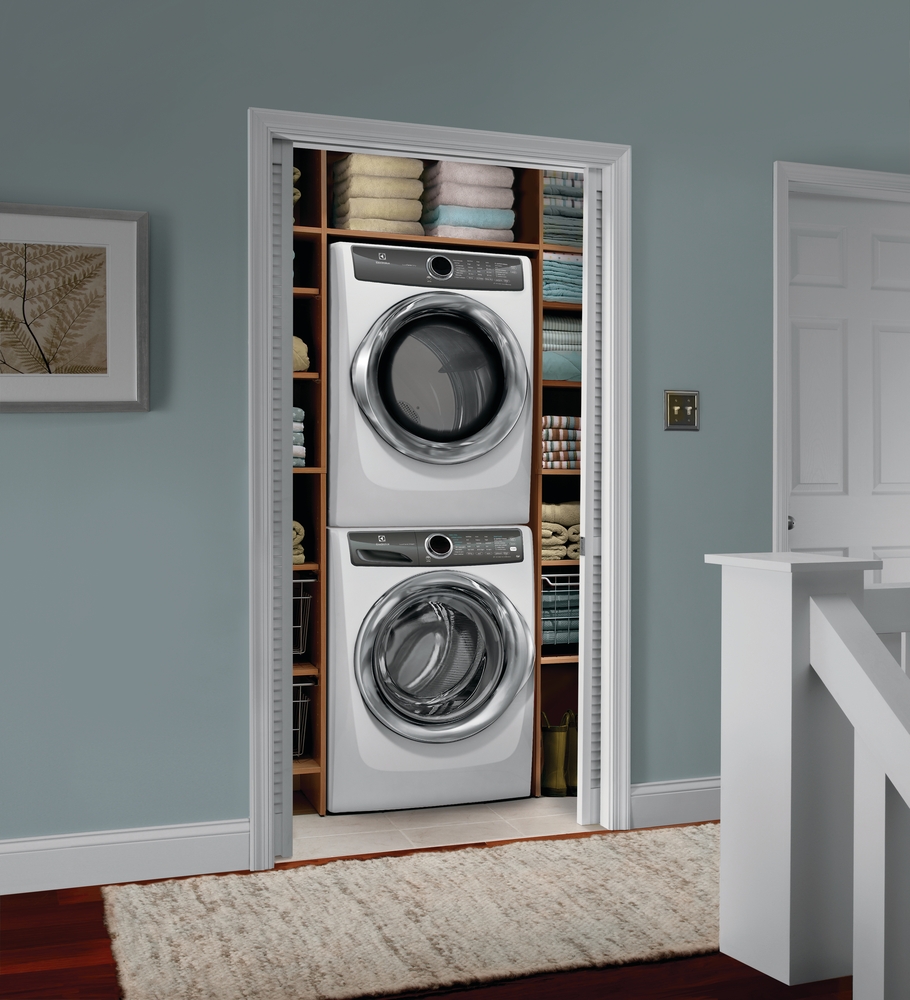
Soak Up Savings
Explore Friedmans Appliance today to exchange your loads of laundry for loads of savings. As the Trusted Name in The Bay Since 1922™, we’re where the Bay Area goes for reliable home appliances from the top brands. Shop online, in-store, or contact us at 925-808-2950 to find a new washer or dryer for your home today!
